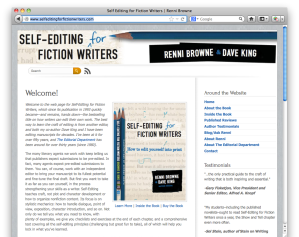 Nothing compares to reading my manuscript on paper after staring at it onscreen for two years. And talking about it for a year with a critique group.
Nothing compares to reading my manuscript on paper after staring at it onscreen for two years. And talking about it for a year with a critique group.
I loaded my baby onto a flash drive and took it to work, anxious for my lunch hour when I could take it to Office Depot. For around $25, I took home a 275-page, spiral bound block of reality.
That baby felt weighty. Substantial. Like I had accomplished something. Wait a sec. She’s no longer a baby. This kid’s a teenager getting groomed to go off to college—that is, the ACFW Genesis Contest. And to visit an agent—well, to query an agent via email. Scary. Thrilling. Terrifying.
I was an editing maniac for a week. I pored over the pages with pen in hand. There were moments of exhilaration. Yeah, I nailed that. And moments of total despair. I suck. I’m so far away from having this ready.
Unbelievable how much I was able to catch by reading the story out loud and making line edits by hand. I deleted paragraphs. Detected sections of dialogue that made me snore. Snipped and tidied and sharpened.
The little darlings—those words I used over and over again without realizing it—popped. Like these:
- “Just.” 253 instances. That’s almost 1 on every page!
- “Truly”
- “California” (my story takes place in Washington state!)
 Before my hard copy review, I read Self-Editing for Fiction Writers: How to Edit Yourself Into Print by Renni Browne and Dave King, a little book full of wisdom critical for the serious writer. I want to memorize it! Then maybe book #2 won’t require nearly as many edits. I can dream, can’t I? 🙂
Before my hard copy review, I read Self-Editing for Fiction Writers: How to Edit Yourself Into Print by Renni Browne and Dave King, a little book full of wisdom critical for the serious writer. I want to memorize it! Then maybe book #2 won’t require nearly as many edits. I can dream, can’t I? 🙂
Below are snippets of editing wisdom I gleaned from the book.
THINGS TO AVOID
- Naming feelings and emotions
- Cliches
- Starting sentences with “As” or words that end in “-ing’
- Passive phrases using “she was -ing”; e.g. “she was screaming.”
Instead use active verbs (and fewer words!); e.g. “she screamed.” - “-ly” words
- Disguising exposition in dialogue (trying to shove information into conversation)
- Explaining – smuggling emotions into speaker attributes that belong in the dialogue or action itself
- Formality in dialogue
- Long, fancy words
- Flowery language
THINGS TO DO
- Use body language to express emotions
- Italicize interior monologue; do not add quotes or provide dialogue tags
- In dialogue, don’t be afraid to use commas instead of periods to make is read like it would sound
- When a character asks a question, have the other character avoid the question or ignore it completely. Have him use misdirection. Or provide a totally different answer than the question asked.
- For dialogue tags, use “Sam said.” –not– “said Sam.” (Easy way to remember – think of how odd it would sound if you wrote “said I.” You’ll either sound like Yoda or the writer of Fun With Dick and Jane)
- To denote trailing off in dialogue, use ellipses
- “Sam…”
- To denote interruption in dialogue, use an em dash
- “Sam, listen—”
Thank you Renni Browne and Dave King for helping me learn how to take my baby one step closer to the real world!
What did I miss? What’s your favorite piece of editing advice?


